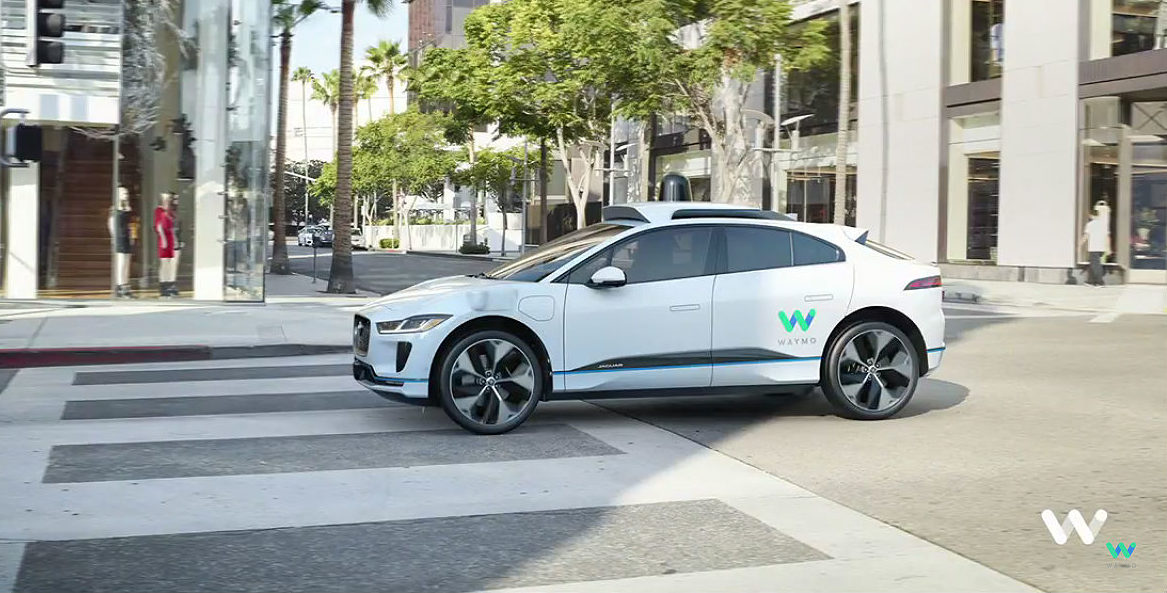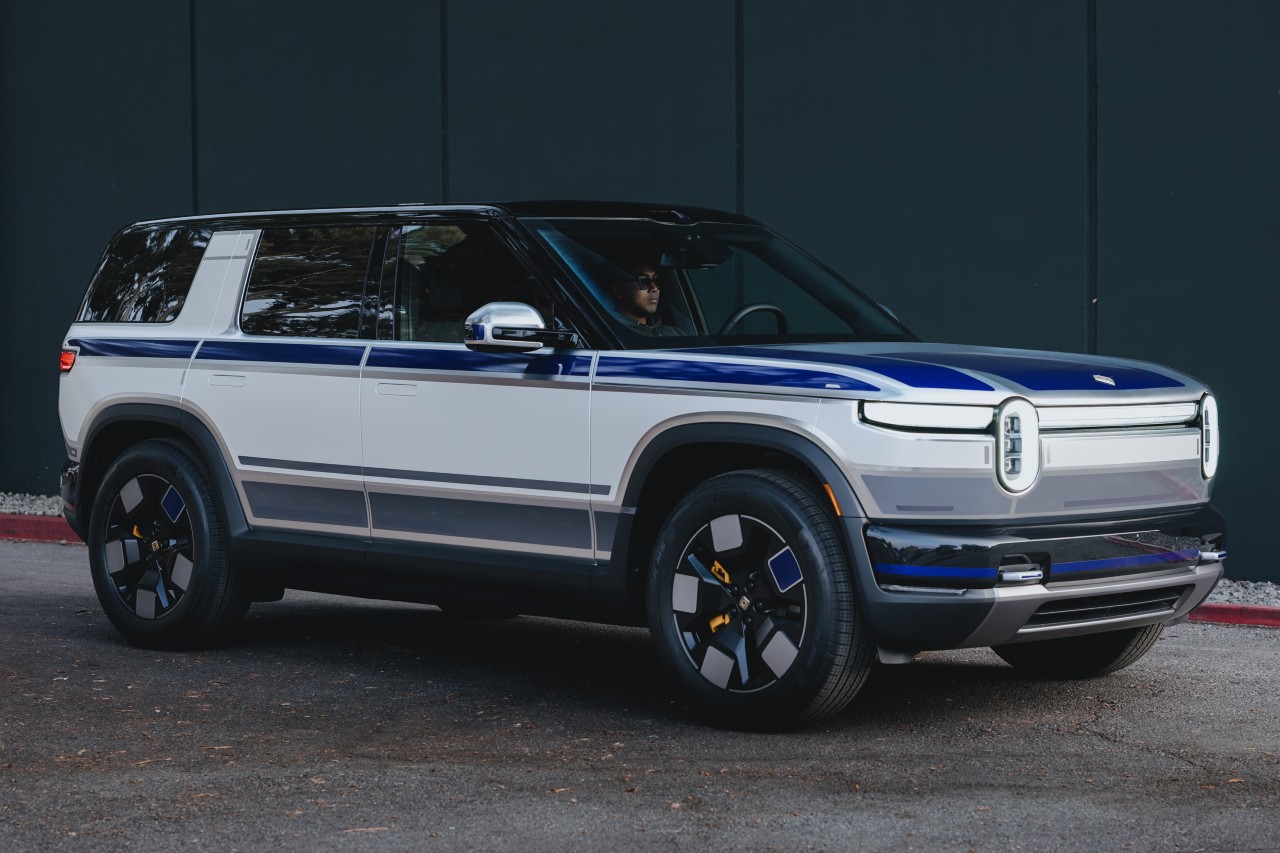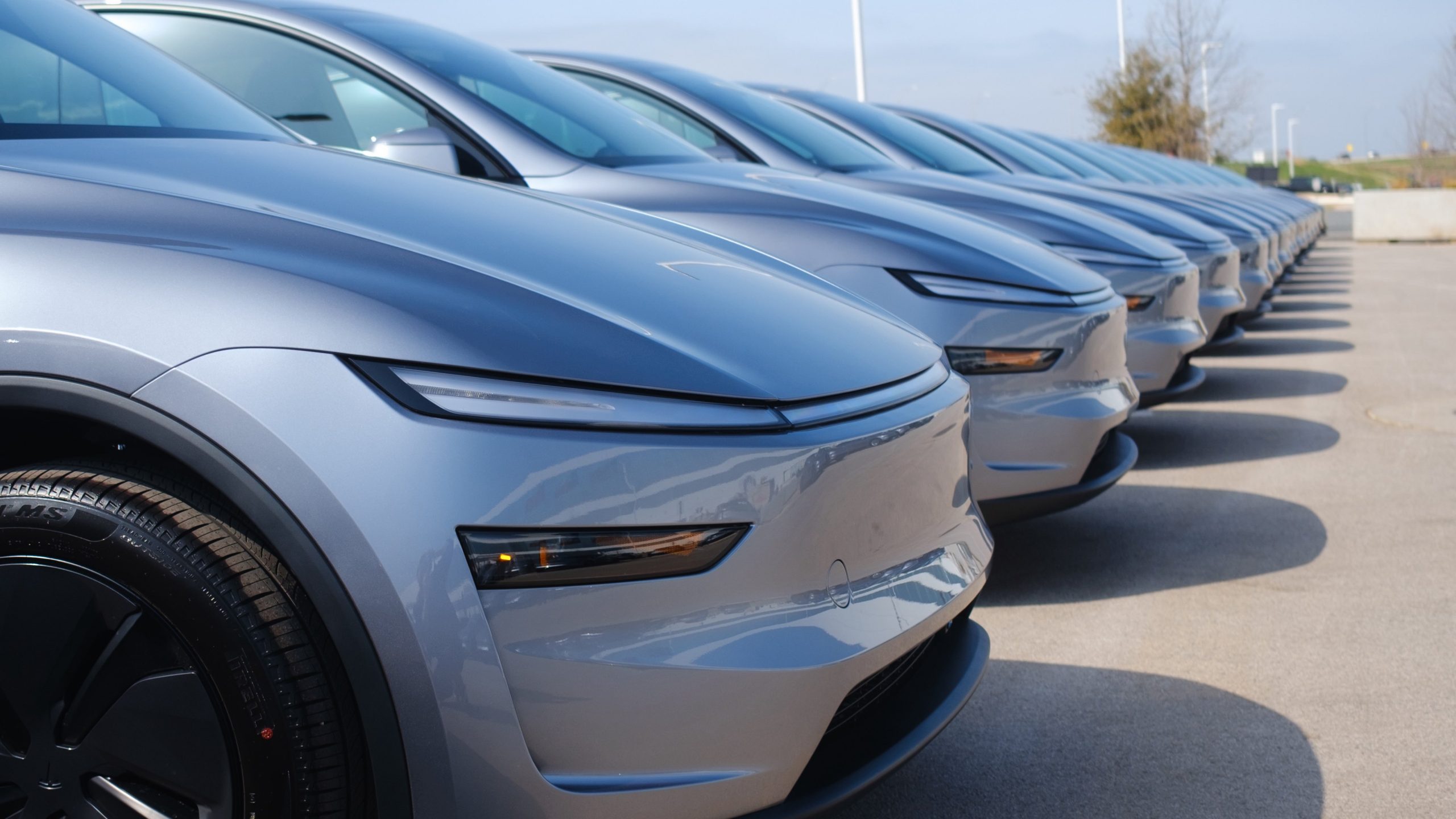News
Waymo considers selling robotaxis to individual owners
Tesla currently offers its Supervised Full Self-Driving to owners of its vehicles, while Waymo is the only company operating paid autonomous ride-hails at this point.

Alphabet-owned robotaxi company Waymo is mulling over the possibility of selling self-driving vehicles to individual owners in the future, as highlighted last week by the Google parent company’s head executive.
On Thursday, Alphabet CEO Sundar Pichai said during the company’s first-quarter earnings update that Waymo would maintain selling self-driving vehicles to individuals as an option in the future, according to a report from Reuters. Pichai didn’t disclose any specifics about the potential to do so or a timeline, though he noted that “there is future optionality for personal ownership.”
Waymo currently operates over 700 self-driving vehicles, 300 of which are operating in San Francisco, and it’s the only company to operate a paid self-driving ride-hailing service as of yet.
The statement comes as Tesla and other companies aim to launch their own commercial robotaxi services, and while the electric vehicle (EV) giant already sells its Supervised Full Self-Driving (FSD) software to individual owners. Additionally, Tesla aims to launch an Unsupervised version in the coming months.
Waymo launched in Austin in January in a unique partnership with Uber, while its self-driving ride-hailing vehicles in California run through its in-house ride-hailing app, Waymo One. It has opened the app to the public in multiple areas of Los Angeles and in cities surrounding and including San Francisco. The company also dropped the need to sign up for a waitlist to use the service in Los Angeles in November, after doing so in the Bay Area earlier that year.
The Alphabet-owned firm also started initial testing in Japan earlier this month, marking the company’s first time in an international market.
Waymo is setting the stage for its rollout in Tokyo. 🇯🇵
Have you experienced a ride in Waymo's self-driving robotaxis?pic.twitter.com/V7lQf1CMjD
— TESLARATI (@Teslarati) April 10, 2025
READ MORE ON WAYMO’S ROBOTAXIS: Here’s where Waymo is launching autonomous robotaxis next
Tesla is targeting a launch its first commercial robotaxis and Unsupervised FSD around Austin in June, and CEO Elon Musk reiterated this goal during the company’s Q1 earnings call on Tuesday. When asked about how Tesla expected its commercial robotaxi services would compete with Waymo, which is already operating paid driverless rides in multiple cities, Musk highlighted how costly the company’s cars are to produce:
The issue with Waymo’s cars is it costs way more money, but that is the issue. The car is very expensive, made in low volume. Teslas probably cost 25 percent or 20 percent of what a Waymo costs, and are made in very high volume.
So, ironically, we’re the ones to make the bet that a pure AI solution with cameras, and what do you have? The car actually will listen for sirens and that kind of thing. It’s the right move.
And Waymo decided that an expensive sensor suite is the way to go, even though Google is very good at AI.
Musk also went on to predict that Tesla would eventually capture at least 90 percent of the robotaxi market, or potentially as much as 99 percent, with millions of cars on the road that are already able to run FSD.
He also highlights that Tesla’s vehicles at both the Gigafactory in Austin, Texas and the Fremont, California plant can drive themselves fully autonomously from the end of the production line to the outbound lot. Musk also said that he was “confident” that the first Model Y units to drive themselves to the customer will take place later this year, from both the Fremont and Austin factories.
Ex-Waymo CEO dismisses Tesla, Cybercab: “They’re a car company with a driver-assist system”

News
Rivian unveils self-driving chip and autonomy plans to compete with Tesla
Rivian, a mainstay in the world of electric vehicle startups, said it plans to roll out an Autonomy+ subscription and one-time purchase program, priced at $49.99 per month and $2,500 up front, respectively, for access to its self-driving suite.

Rivian unveiled its self-driving chip and autonomy plans to compete with Tesla and others at its AI and Autonomy Day on Thursday in Palo Alto, California.
Rivian, a mainstay in the world of electric vehicle startups, said it plans to roll out an Autonomy+ subscription and one-time purchase program, priced at $49.99 per month and $2,500 up front, respectively, for access to its self-driving suite.
CEO RJ Scaringe said it will learn and become more confident and robust as more miles are driven and it gathers more data. This is what Tesla uses through a neural network, as it uses deep learning to improve with every mile traveled.
He said:
“I couldn’t be more excited for the work our teams are driving in autonomy and AI. Our updated hardware platform, which includes our in-house 1600 sparse TOPS inference chip, will enable us to achieve dramatic progress in self-driving to ultimately deliver on our goal of delivering L4. This represents an inflection point for the ownership experience – ultimately being able to give customers their time back when in the car.”
At first, Rivian plans to offer the service to personally-owned vehicles, and not operate as a ride-hailing service. However, ride-sharing is in the plans for the future, he said:
“While our initial focus will be on personally owned vehicles, which today represent a vast majority of the miles to the United States, this also enables us to pursue opportunities in the rideshare space.”
The Hardware
Rivian is not using a vision-only approach as Tesla does, and instead will rely on 11 cameras, five radar sensors, and a single LiDAR that will face forward.
It is also developing a chip in-house, which will be manufactured by TSMC, a supplier of Tesla’s as well. The chip will be known as RAP1 and will be about 50 times as powerful as the chip that is currently in Rivian vehicles. It will also do more than 800 trillion calculations every second.
Meet the Rivian Autonomy Processor.
Fast, smart, scalable and purpose-built for autonomous driving and the world of physical AI. Hitting the open road in 2026. pic.twitter.com/0wYXi5WKy7
— Rivian (@Rivian) December 11, 2025
RAP1 powers the Autonomy Compute Module 3, known as ACM3, which is Rivian’s third-generation autonomy computer.
ACM3 specs include:
- 1600 sparse INT8 TOPS (Trillion Operations Per Second).
- The processing power of 5 billion pixels per second.
- RAP1 features RivLink, a low-latency interconnect technology allowing chips to be connected to multiply processing power, making it inherently extensible.
- RAP1 is enabled by an in-house developed AI compiler and platform software
As far as LiDAR, Rivian plans to use it in forthcoming R2 cars to enable SAE Level 4 automated driving, which would allow people to sit in the back and, according to the agency’s ratings, “will not require you to take over driving.”
More Details
Rivian said it will also roll out advancements to the second-generation R1 vehicles in the near term with the addition of UHF, or Universal Hands-Free, which will be available on over 3.5 million miles of roadway in the U.S. and Canada.
More than any other feature, our owners have asked for more hands-free miles.
With Universal Hands-Free, you can now enjoy hands-free assisted driving on any road with clearly defined lanes. That’s roughly 3.5 million miles in the U.S. and Canada.
Look for it in our next… pic.twitter.com/ZFhwVzvt6b
— Rivian (@Rivian) December 11, 2025
Rivian will now join the competitive ranks with Tesla, Waymo, Zoox, and others, who are all in the race for autonomy.
News
Tesla partners with Lemonade for new insurance program
Tesla recently was offered “almost free” coverage for Full Self-Driving by Lemonade’s Shai Wininger, President and Co-founder, who said it would be “happy to explore insuring Tesla FSD miles for (almost) free.”

Tesla owners in California, Oregon, and Arizona can now use Lemonade Insurance, the firm that recently said it could cover Full Self-Driving miles for “almost free.”
Lemonade, which offered the new service through its app, has three distinct advantages, it says:
- Direct Connection for no telematics device needed
- Better customer service
- Smarter pricing
The company is known for offering unique, fee-based insurance rates through AI, and instead of keeping unclaimed premiums, it offers coverage through a flat free upfront. The leftover funds are donated to charities by its policyholders.
On Thursday, it announced that cars in three states would be able to be connected directly to the car through its smartphone app, enabling easier access to insurance factors through telematics:
Lemonade customers who own @Tesla vehicles in California, Oregon, and Arizona can now connect their cars directly to the Lemonade app! ⚡🚘
Direct connection = no telematics device needed 📵
Better customer experience 💃
Smarter pricing with Lemonade 🧠This is a game-changer… pic.twitter.com/jbabxZWT4t
— Lemonade (@Lemonade_Inc) December 11, 2025
Tesla recently was offered “almost free” coverage for Full Self-Driving by Lemonade’s Shai Wininger, President and Co-founder, who said it would be “happy to explore insuring Tesla FSD miles for (almost) free.”
The strategy would be one of the most unique, as it would provide Tesla drivers with stable, accurate, and consistent insurance rates, while also incentivizing owners to utilize Full Self-Driving for their travel miles.
Tesla Full Self-Driving gets an offer to be insured for ‘almost free’
This would make FSD more cost-effective for owners and contribute to the company’s data collection efforts.
Data also backs Tesla Full Self-Driving’s advantages as a safety net for drivers. Recent figures indicate it was nine times less likely to be in an accident compared to the national average, registering an accident every 6.36 million miles. The NHTSA says a crash occurs approximately every 702,000 miles.
Tesla also offers its own in-house insurance program, which is currently offered in twelve states so far. The company is attempting to enter more areas of the U.S., with recent filings indicating the company wants to enter Florida and offer insurance to drivers in that state.
News
Tesla Model Y gets hefty discounts and more in final sales push

Tesla Model Y configurations are getting hefty discounts and more benefits as the company is in the phase of its final sales push for the year.
Tesla is offering up to $1,500 off new Model Y Standard trims that are available in inventory in the United States. Additionally, Tesla is giving up to $2,000 off the Premium trims of the Model Y. There is also one free upgrade included, such as a paint color or interior color, at no additional charge.
NEWS: Tesla is now offering discounts of up to $1,500 off new Model Y Standard vehicles in U.S. inventory. Discounts of up to $2,000 are also being offered on Model Y Premiums.
These discounts are in addition to the one free upgrade you get (such as Diamond Black paint) on… pic.twitter.com/L0RMtjmtK0
— Sawyer Merritt (@SawyerMerritt) December 10, 2025
Tesla is hoping to bolster a relatively strong performance through the first three quarters of the year, with over 1.2 million cars delivered through the first three quarters.
This is about four percent under what the company reported through the same time period last year, as it was about 75,000 vehicles ahead in 2024.
However, Q3 was the company’s best quarterly performance of all time, and it surged because of the loss of the $7,500 EV tax credit, which was eliminated in September. The imminent removal of the credit led to many buyers flocking to Tesla showrooms to take advantage of the discount, which led to a strong quarter for the company.
2024 was the first year in the 2020s when Tesla did not experience a year-over-year delivery growth, as it saw a 1 percent slide from 2023. The previous years saw huge growth, with the biggest coming from 2020 to 2021, when Tesla had an 87 percent delivery growth.
This year, it is expected to be a second consecutive slide, with a drop of potentially 8 percent, if it manages to deliver 1.65 million cars, which is where Grok projects the automaker to end up.
Tesla will likely return to its annual growth rate in the coming years, but the focus is becoming less about delivery figures and more about autonomy, a major contributor to the company’s valuation. As AI continues to become more refined, Tesla will apply these principles to its Full Self-Driving efforts, as well as the Optimus humanoid robot project.
Will Tesla thrive without the EV tax credit? Five reasons why they might
These discounts should help incentivize some buyers to pull the trigger on a vehicle before the year ends. It will also be interesting to see if the adjusted EV tax credit rules, which allowed deliveries to occur after the September 30 cutoff date, along with these discounts, will have a positive impact.








